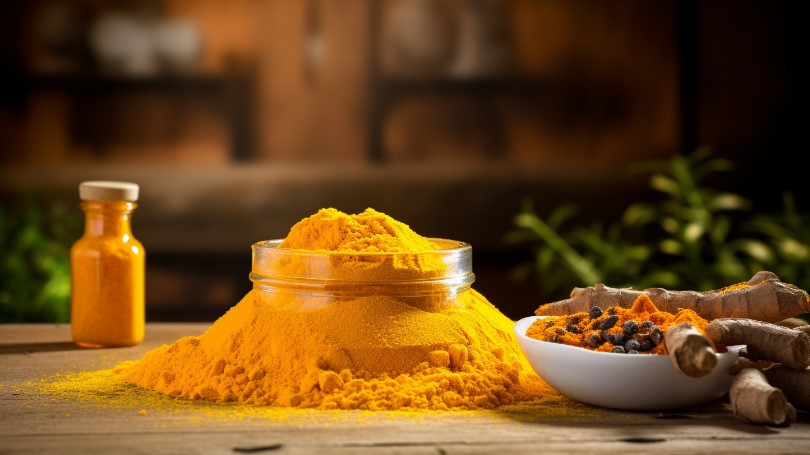Curcumin can significantly improve cognitive decline caused by aging

Ginger has a strong smell and taste, while turmeric is more subdued. The reason why the curry we usually eat is yellow paste is because it contains a lot of turmeric powder which is dried and ground from turmeric.
As the name suggests, Curcumin is a substance extracted from turmeric, which is also orange in color and has certain antioxidant activity. In 2022, researchers at the Autonomous University of Puebla in Mexico found that curcumin improved nerve cell health in older mice, helping to combat age-related cognitive decline. The results were published in March of the same year in the Journal of Neuroanatomy.
In the experiment, the researchers mixed curcumin in a gelatinous solvent and delivered it to mice by intraperitoneal injection. Twelve healthy old male mice were injected five times a week at a dose of 20mg/kg (equivalent to about 90mg per injection in humans) for 2 months; A control group of 12 mice received the same amount of blank solvent.
They found that mice supplemented with curcumin had better cognitive abilities. In a test called the Morris water maze, mice had to use spatial cognition and memory to find a hidden underwater landing platform as quickly as possible, and the old mice injected with curcumin spent significantly less time than the control group.
But when the researchers looked at how curcumin affected the brains of mice, they were surprised to find that it did not reverse the loss of brain cells associated with aging: there was no significant difference in the number of cells in any area of the brain in the curcumin group compared with the control group.
Although the number of brain cells did not increase, curcumin improved the shape of the nerve cells in the mice’s brains and increased the ability of the cells to communicate with each other. In the experiment, the researchers used a method called “Sholl analysis” to measure the branch density of nerve cells. They placed an image of a nerve cell in the center of a series of concentric circles, and then counted the number of points at which the nerve cell branches crossed the concentric circles. The more intersections there were, the more branched it was and the better it was at interacting with other cells.
The results showed that the number of nerve cell branches in the old mice injected with curcumin was significantly higher than that in the control group.
In addition, curcumin increased the density of dendritic spines of nerve cells in the brains of mice. Dendritic spines are small bumps that grow on the dendrites of nerve cells, and it is between these bumps that nerve cells communicate with each other. The increased density of dendritic spines means increased communication between nerve cells and may therefore help improve cognitive performance in older mice.
In addition, curcumin increased the density of dendritic spines of nerve cells in the brains of mice. Dendritic spines are small bumps that grow on the dendrites of nerve cells, and it is between these bumps that nerve cells communicate with each other. The increased density of dendritic spines means increased communication between nerve cells and may therefore help improve cognitive performance in older mice.
Overall, this study found that curcumin can improve the health of nerve cells in the brains of elderly mice and enhance communication between them, resulting in better cognitive abilities in elderly mice. As research continues to deepen, curcumin may be used as an adjunct in the future to help humans combat age-related cognitive decline and maintain a clear mind in old age.
Curcumin manufacturer Curcumin Manufacturers/Curcumin powder Supplier /Curcumin Suppliers/Curcumin Factory: :
Phone: +86 (029) 8187 2325
Email: [email protected]
References:
1. Gonzalez-Granillo, A. E., Gnecco, D., Diaz, A., Garces-Ramirez, L., de la Cruz, F., Juarez, I., Morales-Medina, J. C., & Flores, G. (2022). Curcumin induces cortico-hippocampal neuronal reshaping and memory improvements in aged mice. Journal of Chemical neuroanatomy, 121, 102091. https://doi.org/10.1016/j.jchemneu.2022.102091
